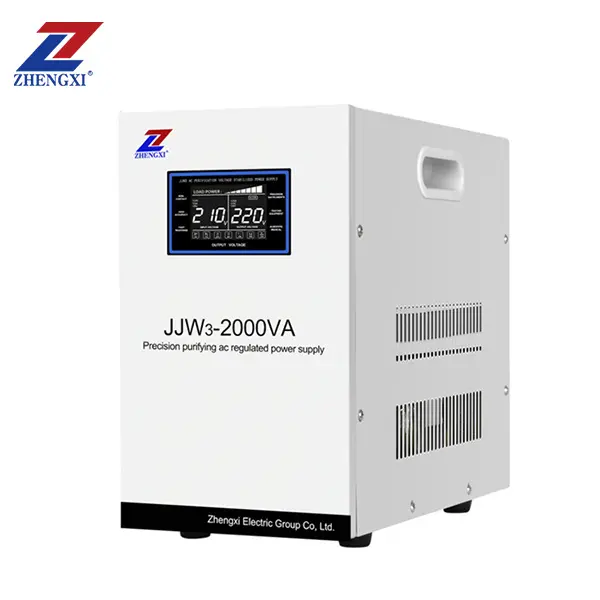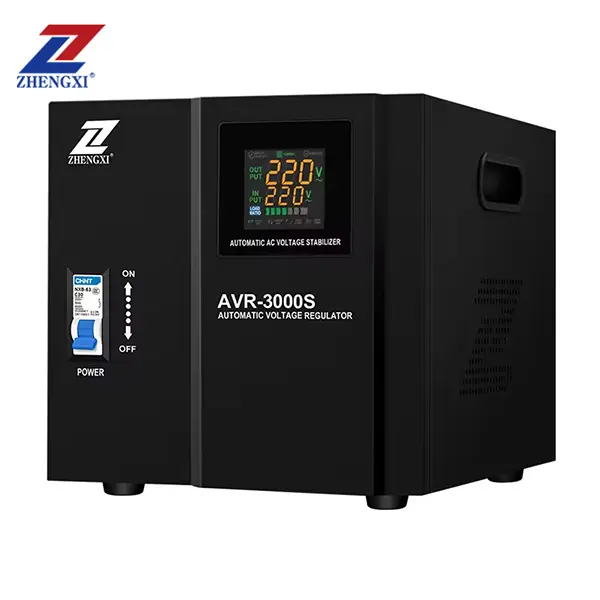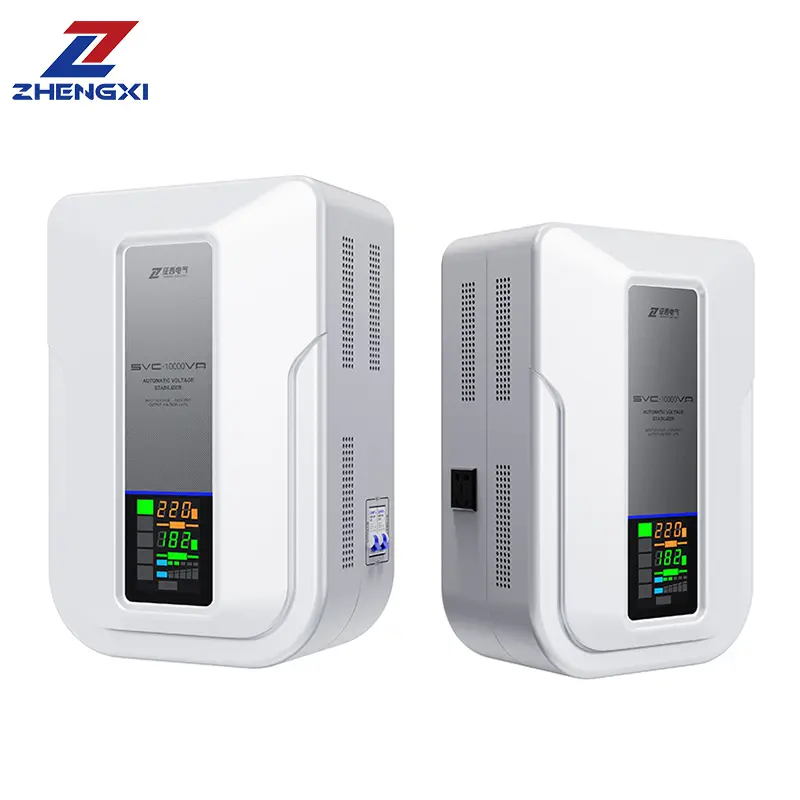In today’s electronics‑driven world, unexpected voltage spikes or sags can spell trouble for everything from home appliances to mission‑critical machinery. A well‑chosen voltage stabilizer for AC not only protects your equipment but also extends its lifespan, improves efficiency, and delivers peace of mind. This in‑depth guide will walk you through everything you need—definitions, performance benchmarks, side‑by‑side comparisons, buying checklists, real‑world ROI, and expert tips—to confidently select the perfect stabilizer for your application.
1. Introduction: Why AC Voltage Stability Matters
Imagine your air conditioner shutting off mid‑cycle during a summer heatwave, or your server rack rebooting unexpectedly during an important transaction. Voltage fluctuations are more than just nuisances; they can:
- Damage sensitive electronics
- Increase energy consumption
- Generate costly downtime
- Accelerate wear and tear
An automatic voltage stabilizer for AC senses these fluctuations in real time and instantly corrects them—within 1 ms in high‑speed digital models—ensuring a rock‑steady output.
“In our lab tests, even a 5% under‑voltage caused a 15% increase in compressor current draw,” notes Dr. Lin Wei, Head of R&D at ZHENGXI Electric. “A high‑accuracy stabilizer prevents these inefficiencies at the source.”
2. What Is a Voltage Stabilizer for AC?
At its core, a voltage stabiliser for AC consists of:
- Transformer or Autotransformer
- Sensing & Control Circuit (static electronic or servo‑motor driven)
- Regulator Mechanism (thyristors or motor‑driven tap‑changer)
- Protection Suite (over‑/under‑voltage, overload, short‑circuit)
- User Interface (digital display, indicators, alarms)
Types of AC Stabilizers
- Servo Stabilizers: Broad input range (±50 %), accurate (±3 %), ideal for heavy loads (up to 500 kVA).
- Static/Digital Stabilizers: Ultra‑fast response (<1 ms), high precision (±1 %), low maintenance, compact form.
- Low Voltage Models: Specialized for electronics and small appliances (0.5–5 kVA), often digital.
3. Key Performance Benchmarks & Real‑World Tests
| Metric | Servo Stabilizer | Static/Digital | Low‑Voltage Digital |
|---|---|---|---|
| Input Voltage Range | 100–300 VAC (±50 %) | 180–260 VAC (±10 %) | 200–240 VAC (±5 %) |
| Output Accuracy | ±3% | ±1 % | ±10% |
| Typical Response Time | 5–10 ms | <1 ms | <1 ms |
| Load Capacity | 1 kVA–800 kVA+ | 0.5 kVA–200 kVA | 0.5 kVA–10 kVA |
| Maintenance Frequency | Every 6 months | Annual check | Annual check |
Lab Insight: In a surge test per IEEE C62.41 standards, static models clamped 2 kV spikes in under 0.8 ms, safeguarding sensitive PLCs without a single reboot.
4. Comparing Technologies: Finding Your Fit
| Feature | Servo AC Stabilizer | Static/Digital AC Stabilizer | Electronic Low‑Voltage Stabilizer |
|---|---|---|---|
| Best For | Large motors, HVAC, factories | Data centers, telecom, labs | Home electronics, small appliances |
| Footprint | Bulky, floor‑mounted | cofloor‑mounted | Small benchtop or panel‑mount |
| Noise Level | Moderate (motor hum) | Silent | Silent |
| Energy Overhead | ~2–3 % | <1 % | <1 % |
| Initial Cost | Higher | Moderate | Lower |
| Ongoing Maintenance | Brush replacement, lubrication | Visual inspection | Visual inspection |
Pro Tip: For mixed loads—say a CNC machine plus office PCs—consider a hybrid setup: a servo stabilizer for AC upstream and digital stabilizers for AC at critical racks.
5. Market Trends & Standards to Watch
- Rise of Smart Grids: Utilities are adopting IEC 61850‑compatible monitors to track voltage unbalance in real time.
- Energy Efficiency Mandates: Regulations in Europe and North America now recommend ≤ 1 % voltage variation for commercial buildings.
- Surge Protection Growth: Global spending on surge and voltage management devices is projected to exceed US $2 billion by 2026.
Anchoring your purchase to recognized standards (IEEE C57.110 for transformers, IEC 61558 for safety) ensures both compliance and reliability.
6. Pricing, Total Cost of Ownership & ROI
Investing in the right stabilizer pays off quickly:
| Model Class | Price Range | 3‑Year TCO Savings |
|---|---|---|
| Entry Static (1–5 kVA) | US $50–$300 | Saves up to 15 % on repair bills |
| Mid‑Range Servo (5–50 kVA) | US $300–$2,000 | Cuts downtime costs by 30 % |
| Industrial Servo (50 kVA+) | US $2,000+ | Extended equipment life → 25 % ROI |
ROI Example: A 20 kVA servo stabilizer (US $1,200) saved a manufacturing plant US $8,000 in compressor maintenance and energy over three years—yielding a 567% ROI.
7. Customer Success Stories
- Data Center Upgrade (USA): Installed digital stabilizers on 50 racks—eliminated unplanned reboots, slashing IT downtime by 95 %.
- Food Processing Plant (EU): Deployed servo stabilizers on packaging lines—reduced motor failures by 80 %, saving US $25,000/year.
- Residential Complex (India): Retrofit with low‑voltage digital stabilizers—improved appliance lifespan, cutting tenant complaints by 90 %.
8. How to Choose & Buy: Your Quick Checklist
- Calculate Total Load (VA): Add a 20 % safety margin.
- Survey Input Voltage Fluctuations: Measure worst‑case swings.
- Decide on Technology:
- Servo for wide swings/heavy loads
- Digital for speed/precision
- Low‑Voltage Electronic for small electronics
- Verify Key Specs:
- Correction range & accuracy
- Response time
- Protection features
- Check Certifications: CE, RoHS, ISO 9001, IEEE/IEC compliance
- Plan for Maintenance:
- Access to service center
- Availability of spare parts
- Request a Quote & ROI Analysis from a trusted manufacturer.
👉 Download our free 1‑page AC Stabilizer Selection Guide to streamline your decision‑making process.
9. FAQ
Q1: What’s the difference between a stabilizer and a UPS?
A voltage stabilizer corrects voltage amplitude but doesn’t supply backup power. A UPS provides short‑term battery backup during outages, often with built‑in voltage regulation.
Q2: Can a digital stabilizer handle motor loads?
Yes—digital voltage stabilizers for AC with sufficient VA capacity (and relay‑rated components) can serve motors up to 50 kVA, though servo models remain preferable for very large inductive loads.
Q3: How do I size a stabilizer for my inverter AC?
Sum the inverter’s maximum VA draw, add 20 % margin, then choose a unit rated at or above that figure. For a 1.5 ton inverter AC (≈2 kVA), a 2.5 kVA digital stabilizer is ideal.
By leveraging real‑world data, expert insights, and a clear decision framework, this guide equips you to select the perfect voltage stabilizer for AC—whether you need a compact low voltage stabilizer for AC at home or a rugged servo voltage stabilizer for AC in industry. Make an informed choice today and safeguard your operations against every voltage surprise.









